
Journal of Optoelectronic and Biomedical Materials
Scope & Guideline
Illuminating the Future of Optoelectronics in Medicine
Introduction
Aims and Scopes
- Nanomaterials Synthesis and Characterization:
The journal covers various methods of synthesizing nanomaterials, including green synthesis and chemical routes, and emphasizes the characterization of these materials for diverse applications. - Optoelectronic Applications:
Research in this area focuses on the development and optimization of materials for use in optoelectronic devices, including photovoltaics, sensors, and display technologies. - Biomedical Applications:
The journal highlights studies on materials designed for biomedical purposes, including drug delivery systems, tissue engineering, and antimicrobial applications. - Environmental Applications:
There is a consistent focus on the application of materials in environmental remediation, including water purification and degradation of pollutants. - Innovative Methodologies:
The journal promotes innovative approaches in materials science, such as the use of biogenic processes for nanoparticle synthesis and advanced modeling techniques for material properties.
Trending and Emerging
- Green Synthesis of Nanomaterials:
There is a marked increase in research focusing on the green synthesis of nanomaterials, highlighting the environmental benefits and sustainability of using biological or natural sources for material production. - Wearable and Flexible Electronics:
Recent publications indicate a rising interest in the development of wearable and flexible electronics, driven by advancements in materials such as graphene and polymers, which offer new functionalities in health monitoring and consumer electronics. - Biocompatible Nanomaterials:
The trend towards biocompatible materials for drug delivery and tissue engineering applications is gaining traction, reflecting the increasing demand for materials that are safe and effective in biomedical settings. - Multifunctional Nanostructures:
Research on multifunctional nanostructures that can perform multiple tasks, such as sensing, drug delivery, and environmental remediation, is on the rise, showcasing the potential of integrating various functionalities into single materials. - Advanced Photocatalytic Applications:
There is a growing interest in advanced photocatalytic applications for environmental cleanup and energy conversion, with innovative materials being developed to enhance efficiency and effectiveness.
Declining or Waning
- Traditional Chemical Synthesis Methods:
There is a noticeable decline in publications focusing on conventional chemical synthesis methods for nanomaterials, as the trend shifts towards greener, more sustainable synthesis techniques. - General Reviews on Established Topics:
The frequency of comprehensive reviews on well-established topics, such as basic principles of nanotechnology or general materials science, appears to be decreasing, suggesting a move towards more specific, cutting-edge research. - Single-Use Biomedical Applications:
Research centered around single-use biomedical applications is becoming less frequent, possibly due to a growing emphasis on sustainable and reusable materials in biomedical engineering. - Basic Photocatalyst Studies:
There seems to be a reduction in the publication of basic studies on photocatalysts without specific applications, as the journal increasingly favors research that demonstrates practical applications or innovative methodologies.
Similar Journals

University Politehnica of Bucharest Scientific Bulletin Series B-Chemistry and Materials Science
Innovating Research, Bridging Theory and ApplicationUniversity Politehnica of Bucharest Scientific Bulletin Series B-Chemistry and Materials Science is a renowned academic journal published by POLYTECHNIC UNIV BUCHAREST, situated in Romania. With the ISSN 1454-2331, this journal serves as a dynamic platform for the dissemination of innovative research findings in the fields of chemistry and materials science. Although classified in the Q4 quartile of both Chemistry (miscellaneous) and Materials Science (miscellaneous) categories for 2023, it has made a significant impact by providing a venue for emerging scholars and established researchers alike to share their work. The journal seeks to bridge theoretical insights and practical applications, promoting interdisciplinary dialogue and advancing scientific understanding. The scope encompasses a broad range of topics, reflecting contemporary advancements and challenges within the field. To facilitate access to its articles, while it does not currently operate under an open-access model, the journal remains committed to enhancing visibility through digital libraries. With a publication history spanning from 1999 to 2024, the journal is vital for all stakeholders—researchers, professionals, and students—seeking to stay abreast of developments in chemistry and materials science.

Journal of Inorganic and Organometallic Polymers and Materials
Elevating Knowledge in Advanced Polymer MaterialsThe Journal of Inorganic and Organometallic Polymers and Materials, published by SPRINGER, is a premier academic journal dedicated to advancing the field of materials science, particularly in the domains of inorganic and organometallic polymers. Established in 1996, this journal has successfully converged multiple years of research, reflecting the dynamic evolution of the field through to 2024. With an impressive Scopus Rank placing it in the top 81st percentile in both Materials Chemistry and Polymers and Plastics, it is recognized for its significant contributions and innovations. The journal is classified in the prestigious Q2 Category, indicating its influence and relevance among leading publications. While it operates under a subscription model, the journal is committed to disseminating cutting-edge research, providing insights that empower researchers, professionals, and students to push the boundaries of materials chemistry and polymer science. Its focus on high-quality, peer-reviewed articles ensures that readers are equipped with the latest findings and methodologies that drive this exciting and rapidly evolving field.

Discover Nano is a pioneering journal published by SPRINGER, dedicated to the rapidly evolving field of nanoscience and nanotechnology. Established in 2023, this innovative platform provides an open-access forum for researchers, professionals, and students to share and disseminate cutting-edge findings in materials science and condensed matter physics. With its commitment to accessibility, Discover Nano encourages a broad spectrum of contributions, aiming to foster collaboration and stimulate discussion in this dynamic area of study. As a new entry into the academic community, the journal holds great potential for growth, aspiring to increase its visibility and impact in the materials science arena, where it currently ranks in the bottom quartile for both materials science and physics categories. Based in Germany and reaching a global audience, Discover Nano represents a significant opportunity for those looking to shape the future of nanotechnology through impactful research and interdisciplinary dialogue.
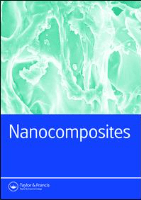
Nanocomposites
Fostering Collaboration in Cutting-Edge NanomaterialsNanocomposites, published by Taylor & Francis Ltd, is a leading open-access journal dedicated to the interdisciplinary field of nanomaterials and their applications in composites. With its ISSN 2055-0324 and E-ISSN 2055-0332, the journal has established itself as a premier platform for disseminating high-quality research since its inception in 2015. It is notable for its impressive Q1 rankings across various categories, including Ceramics and Composites, Materials Chemistry, Mechanical Engineering, and Mechanics of Materials, reflecting its significant impact on the scientific community. The journal is recognized for its rigorous peer-review process and rapid publication times, making it an essential resource for researchers and professionals seeking to advance knowledge in the synthesis, characterization, and application of nanocomposite materials. With an open access policy implemented in 2017, Nanocomposites ensures that cutting-edge research is accessible to a global audience, fostering collaboration and innovation across disciplines. Emphasizing the critical role that nanocomposites play in advancing technology, this journal invites contributions that push the boundaries of current understanding and application.
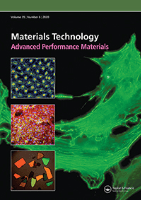
MATERIALS TECHNOLOGY
Elevating Knowledge in Mechanics and MaterialsMATERIALS TECHNOLOGY is a prestigious academic journal published by Taylor & Francis Ltd, based in the United Kingdom. With an ISSN of 1066-7857 and an E-ISSN of 1753-5557, this journal has established itself as a vital resource in the fields of Condensed Matter Physics, Materials Science, Mechanical Engineering, and Mechanics of Materials, earning a Q2 ranking in multiple categories as of 2023. With a rich publication history that dates back to the early 1970s, it serves as an essential platform for disseminating innovative research and developments in materials technology. Although not available through Open Access, the journal continues to attract contributions from leading researchers, ensuring high-quality articles that advance knowledge in the materials domain. The journal's commitment to excellence is reflected in its notable Scopus rankings, placing it within the 70th to 78th percentiles across several engineering and physics categories. As a vital resource for researchers, professionals, and students alike, MATERIALS TECHNOLOGY plays a critical role in shaping the future of materials science and engineering.

Journal of Nano Research
Empowering Research in the Nano RealmThe Journal of Nano Research, published by Trans Tech Publications Ltd, is a distinguished academic journal dedicated to the rapidly evolving field of nanotechnology and materials science. With an ISSN of 1662-5250 and an E-ISSN of 1661-9897, the journal has been an important platform for researchers and professionals since its inception in 2008, continuing to provide high-quality peer-reviewed research through to 2024. Nestled in Switzerland, the Journal of Nano Research plays a pivotal role in disseminating cutting-edge findings, as recognized by its categorization in Q3 for Materials Science and Physics while being positioned in Q4 for Nanoscience and Nanotechnology as of 2023. With Scopus rankings highlighting its impact, including Rank #129 in general Physics and Astronomy and Rank #300 in Materials Science, this journal is crucial for academics seeking to stay ahead in research trends and innovations in nano-related disciplines. Although it operates under a subscription model, the journal's objectives include fostering collaboration and knowledge-sharing among researchers, making it an invaluable resource for anyone immersed in the world of nanotechnology.
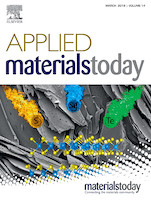
Applied Materials Today
Elevating Knowledge in Materials Science.Applied Materials Today is a leading peer-reviewed journal published by ELSEVIER, dedicated to the field of materials science. With an impressive impact factor and ranked in the Q1 category for materials science (miscellaneous) in 2023, this journal stands out as a crucial platform for sharing groundbreaking research and innovative applications of materials. Based in the Netherlands, the journal has rapidly gained recognition, achieving a remarkable Scopus ranking of 41 out of 463, placing it in the 91st percentile among general materials science publications. Covering a broad range of topics, from the synthesis and characterization of materials to their practical applications, Applied Materials Today seeks to inspire and inform researchers, professionals, and students alike. Its commitment to disseminating high-quality, open-access content ensures that cutting-edge discoveries in materials science can be shared with a global audience, fostering collaboration and advancements in the field.
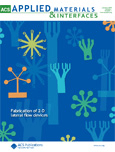
ACS Applied Materials & Interfaces
Driving Discoveries at the Intersection of Science and ApplicationACS Applied Materials & Interfaces, published by the American Chemical Society, stands as a leading journal in the field of applied materials, nanotechnology, and interdisciplinary research in medicine. With an impressive Impact Factor that places it in the Q1 category across Materials Science, Medicine, and Nanoscience and Nanotechnology, this journal consistently ranks among the top tier, evidencing its significance and influence in advancing scientific knowledge. The journal’s scopus ranking of 33 out of 463 in General Materials Science further underscores its critical role in disseminating innovative and high-quality research. Although it is not an open-access journal, a diverse range of access options is available, ensuring that vital research findings are accessible to a broad audience of researchers, professionals, and students. Targeting breakthroughs in the synthesis, characterization, and application of materials and interfaces, ACS Applied Materials & Interfaces serves as a pivotal platform for publishing cutting-edge studies essential for future technological advancements.
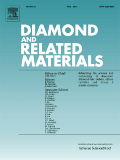
DIAMOND AND RELATED MATERIALS
Connecting theory with application in diamond research.DIAMOND AND RELATED MATERIALS, published by Elsevier Science SA, serves as a premier international platform for the dissemination of high-quality research in the fields of materials science, electrical engineering, and chemistry, with a specialized focus on diamond and its related materials. With an ISSN of 0925-9635 and an E-ISSN of 1879-0062, this journal has established itself within the top quartiles, reflecting its influential contribution to the scientific community, particularly in the categories of Chemistry (miscellaneous) and Electrical Engineering, among others. The journal's wide scope encompasses both theoretical and applied aspects of diamond research, making it an essential resource for professionals and academics alike. The current rankings position it favorably within its respective disciplines, with a notable 79th percentile in General Physics and Astronomy and strong standings in related categories. Although it does not offer open access, researchers can stay informed of cutting-edge advancements and methodologies through its comprehensive articles and reviews, enriching the wider discourse in advanced materials research.

MATERIALS LETTERS
Connecting innovation with application in materials research.MATERIALS LETTERS, published by ELSEVIER, is a premier journal dedicated to the rapid dissemination of significant advances in the field of materials science and engineering. With an impressive impact factor and a solid reputation reflected in its ranking within the Q2 quartile of various categories such as Condensed Matter Physics, Materials Science, Mechanical Engineering, and Mechanics of Materials, it provides a platform for researchers, professionals, and students to share focused and innovative research findings from 1982 to the present. Despite being a subscription-based journal, its accessibility through institutional and personal subscriptions ensures a wide reach in the academic community. By presenting concise reports, the journal aims to bridge the gap between fundamental research and practical applications, highlighting the critical role of materials in technological advancement. The journal's ISSN is 0167-577X and the E-ISSN is 1873-4979. For researchers looking to publish their work or follow the latest trends in materials science, MATERIALS LETTERS stands as an essential resource, contributing significantly to the discourse in this dynamic field.